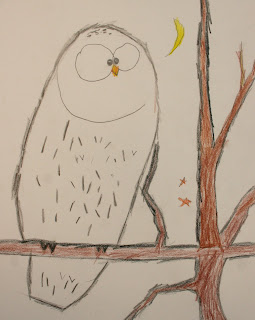This watercolor starts with light pencil drawing of the lines of ground, mountains, and sky. The pencil lines are guidelines for the watercolor layers. Students must paint each layer of the painting without the colors mixing. They must leave a thin, white space of paper between colors.
We usually talk about abstract art. We discuss that abstract paintings can look like different things to every person. I ask questions to try to open their minds to some appreciation of abstract art.












_new.JPG)


